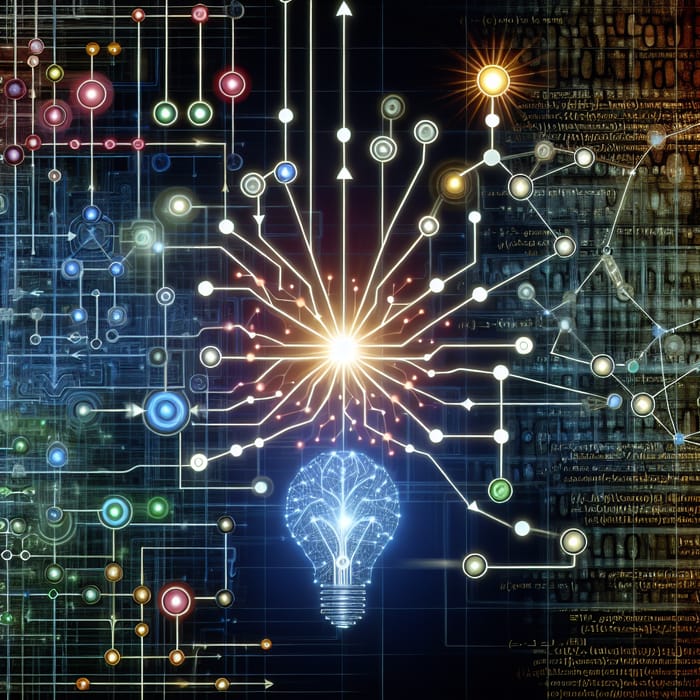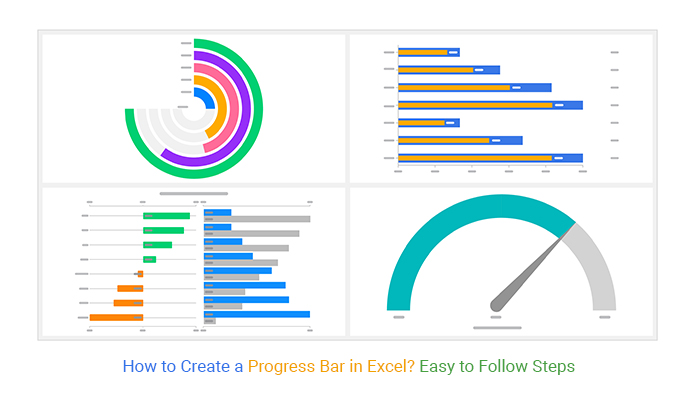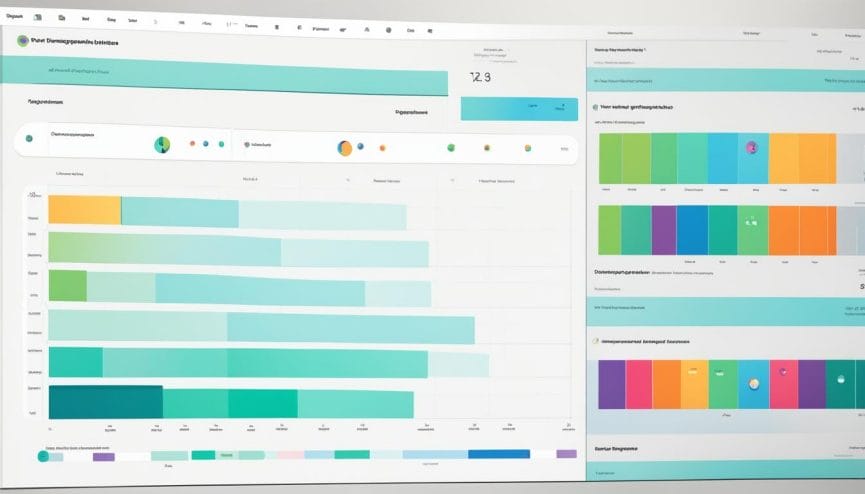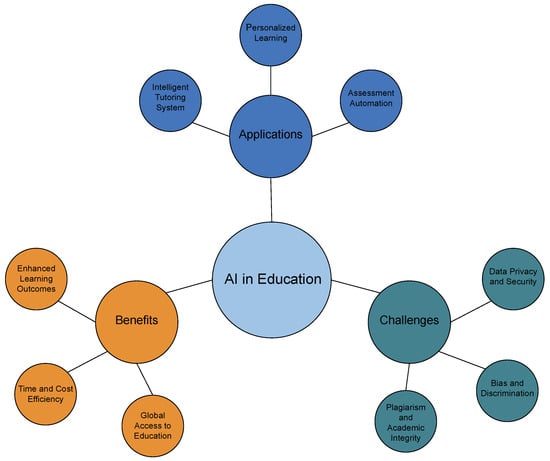Creating Sustainable AI Learning Through Visual Impact Loops
Revolutionizing AI Education with Cyclical Visual Learning
Discover how the Impact Loop Method transforms abstract AI concepts into lasting knowledge through visual experience, reflection, application, and feedback cycles that create sustainable learning pathways for modern AI education.
Understanding the Impact Loop Framework
The Impact Loop Framework represents a revolutionary approach to AI and education that addresses the fundamental challenge of sustainable knowledge retention. Unlike traditional linear learning methods that often result in forgotten information, impact loops create cyclical reinforcement patterns that build lasting understanding through continuous engagement.
The Complete Impact Loop Cycle
flowchart TD
A[Experience: Visual AI Concept Exposure] --> B[Reflection: Analyze Understanding Gaps]
B --> C[Application: Create Visual Projects]
C --> D[Feedback: Assess Progress Visually]
D --> A
style A fill:#FF8000,stroke:#333,stroke-width:2px,color:#fff
style B fill:#42A5F5,stroke:#333,stroke-width:2px,color:#fff
style C fill:#66BB6A,stroke:#333,stroke-width:2px,color:#fff
style D fill:#FFA726,stroke:#333,stroke-width:2px,color:#fff
Core Components
- Experience: Immersive exposure to AI concepts through visual media
- Reflection: Critical analysis of understanding and knowledge gaps
- Application: Hands-on practice with real-world AI scenarios
- Feedback: Visual progress tracking and assessment
Why Traditional Methods Fail
- Linear progression without reinforcement
- Lack of visual memory anchors
- Insufficient reflection opportunities
- Absence of practical application cycles
The psychology behind loop-based learning leverages the brain's natural pattern recognition and memory consolidation processes. When learners engage with AI concepts through repeated visual cycles, they create stronger neural pathways that support long-term retention. PageOn.ai's AI Blocks feature provides the perfect tool for visualizing these complete Impact Loop cycles, breaking down complexity into understandable structural representations that learners can follow and modify for their specific needs.

The Visual Foundation of Sustainable Learning
Visual learning creates exponentially stronger neural pathways compared to text-based approaches, making it the cornerstone of sustainable AI education. When learners process information visually, they engage multiple cognitive systems simultaneously, creating redundant memory pathways that enhance both retention and recall capabilities.
Visual vs. Text Learning Effectiveness
The Role of Visual Memory in Learning
Visual memory operates through dual coding theory, where information is processed both verbally and visually. This creates multiple retrieval pathways that significantly improve long-term retention rates. In AI education, this translates to learners who can not only remember concepts but also apply them creatively in new contexts.
- • Enhanced pattern recognition
- • Improved concept mapping
- • Stronger emotional connections
- • Better knowledge transfer
Breaking down complex AI concepts through visual storytelling transforms abstract principles into tangible, understandable narratives. PageOn.ai's "Turn Fuzzy Thought into Clear Visuals" capability excels at this transformation, helping educators and learners convert complicated AI theories into clear visual representations that support the reflection phase of the impact loop.

Creating Visual Anchors for Reflection
Visual anchors serve as cognitive landmarks that learners can return to during reflection phases. These might include concept maps, flowcharts, or interactive diagrams that represent key AI principles. When learners encounter new information, they can mentally "attach" it to these existing visual frameworks, creating a structured approach to knowledge building that supports the cyclical nature of impact loops.
Designing Your AI Learning Impact Loop
Creating an effective AI learning impact loop requires careful attention to each phase, with visual elements serving as the connecting thread that maintains continuity and reinforcement. This systematic approach ensures that learning builds upon itself, creating compound knowledge growth over time.
Phase 1: Visual Experience Creation
The foundation of any successful impact loop begins with identifying key AI concepts that benefit most from visual representation. This phase focuses on creating immersive learning experiences that capture attention and establish strong initial understanding.
Key Strategies for Visual Experience
- • Identify abstract AI concepts requiring visualization (neural networks, algorithms, data flows)
- • Leverage PageOn.ai's Deep Search to integrate relevant AI visualizations and supporting data
- • Create structured visual content that progresses from simple to complex
- • Design interactive elements that encourage exploration and discovery
Phase 2: Reflective Visual Analysis
Reflection transforms initial exposure into deeper understanding through structured analysis and comparison. This phase is where learners identify gaps in their knowledge and make connections between new and existing concepts.
Before/After Frameworks
Visual comparison tools that help learners see their progress and identify areas needing additional focus.
Reflection Prompts
Structured questions that leverage visual elements to guide critical thinking and self-assessment.
Phase 3: Practical Application Through Visual Projects
Application transforms understanding into capability through hands-on projects that produce tangible visual outcomes. This phase bridges the gap between theoretical knowledge and practical skills, particularly important for AI lesson planning and implementation.
PageOn.ai's Agentic processes excel at transforming learning intent into polished visual demonstrations, allowing learners to create professional-quality outputs that reinforce their understanding while building confidence in their AI capabilities.

Phase 4: Visual Feedback Integration
The feedback phase completes the loop by providing visual progress tracking and assessment tools that inform the next cycle of learning. This creates a self-reinforcing system where each iteration builds upon previous successes and addresses identified weaknesses.
Visual Feedback Components
- • Progress tracking dashboards with visual indicators
- • Assessment tools that provide immediate visual feedback
- • Peer comparison visualizations for motivation
- • Goal-setting interfaces with visual progress bars
Overcoming Common Barriers to Sustainable AI Learning
Traditional AI education faces several persistent challenges that impact loops with visual foundations can effectively address. Understanding these barriers and implementing targeted solutions creates more accessible and engaging learning experiences for diverse learners.
Common Learning Barriers and Visual Solutions
graph TD
A[Complexity Overwhelm] --> A1[Break into Visual Components]
B[Abstract Concepts] --> B1[Concrete Visual Examples]
C[Tutorial Trap] --> C1[Self-Reinforcing Loops]
D[Lack of Accountability] --> D1[Visual Progress Documentation]
A1 --> E[Enhanced Understanding]
B1 --> E
C1 --> E
D1 --> E
style A fill:#ff6b6b,stroke:#333,stroke-width:2px,color:#fff
style B fill:#ff6b6b,stroke:#333,stroke-width:2px,color:#fff
style C fill:#ff6b6b,stroke:#333,stroke-width:2px,color:#fff
style D fill:#ff6b6b,stroke:#333,stroke-width:2px,color:#fff
style E fill:#51cf66,stroke:#333,stroke-width:2px,color:#fff
The Complexity Overwhelm Problem
AI concepts often involve multiple interconnected systems that can overwhelm learners when presented as dense text or abstract theories.
Visual Solution: Break complex systems into digestible visual components that can be understood individually before being connected as a whole.
Abstract Nature of AI Concepts
Many AI principles exist in mathematical or theoretical realms that lack tangible real-world connections for most learners.
Visual Solution: Transform abstract principles into concrete visual examples using analogies, metaphors, and real-world applications.
Breaking Through the "Tutorial Trap"
Many learners get stuck in endless tutorial consumption without applying knowledge or building real skills. This creates an illusion of progress without actual capability development.
Self-reinforcing visual loops address this by requiring active creation and application in each cycle. When learners must produce visual outputs and track their progress visually, they move beyond passive consumption to active skill building. The impact loop structure naturally prevents stagnation by requiring progression through all four phases.
Creating accountability through visual progress documentation provides motivation and clear evidence of growth over time. PageOn.ai's Vibe Creation feature makes AI concepts more accessible and engaging by allowing learners to customize the presentation style and complexity level to match their current understanding and learning preferences.

Implementing Impact Loops in Different AI Learning Contexts
The versatility of the Impact Loop Method allows for adaptation across diverse learning environments and contexts. Whether applied to individual study, corporate training, academic curricula, or community learning initiatives, the core principles remain consistent while implementation details adapt to specific needs and constraints.
Self-Directed AI Education and Personal Learning Journeys
Individual learners benefit from the structured yet flexible nature of impact loops, which provide clear progression pathways while allowing for personalized pacing and focus areas. The visual nature of the method supports self-assessment and motivation maintenance over extended learning periods.
Key Implementation Strategies:
- • Personal learning dashboards
- • Self-paced visual milestones
- • Reflection journaling with visual elements
- • Project portfolio development
Success Metrics:
- • Consistent loop completion rates
- • Quality of visual project outputs
- • Knowledge retention over time
- • Application of skills in new contexts
Corporate AI Training and Team Development Programs
Organizations implementing AI assistants in education and training programs find that impact loops create measurable skill development while building team cohesion through shared visual learning experiences.
Corporate implementations often include team-based reflection sessions, collaborative visual projects, and organizational knowledge bases that capture and share learning outputs across departments.
Academic AI Curriculum Design and Classroom Implementation
Educational institutions benefit from the structured assessment opportunities and clear learning progression that impact loops provide. The visual nature supports diverse learning styles while creating portfolio evidence of student growth.
PageOn.ai's Deep Search functionality proves invaluable for educators seeking contextual examples and real-world case studies to enrich their curriculum design and provide students with relevant, current AI applications.
Community-Based AI Learning Initiatives and Study Groups
Community learning environments leverage the social aspects of impact loops, where shared visual resources and collaborative reflection sessions create supportive learning networks that extend beyond formal educational settings.
Community Benefits:
- • Peer learning and mentorship opportunities
- • Shared resource libraries and visual assets
- • Collaborative project development
- • Cross-pollination of ideas and approaches

Measuring and Optimizing Your Learning Impact Loop
Effective measurement and optimization of your learning impact loop requires a comprehensive approach that tracks both quantitative progress metrics and qualitative learning outcomes. This data-driven approach ensures continuous improvement and sustained engagement with the learning process.
Key Learning Metrics Dashboard
Progress Tracking
- • Loop completion rates
- • Time spent in each phase
- • Project quality scores
- • Knowledge retention tests
Engagement Metrics
- • Session duration and frequency
- • Visual content interaction rates
- • Reflection depth and quality
- • Peer collaboration frequency
Outcome Measures
- • Skill application in new contexts
- • Creative problem-solving ability
- • Teaching and knowledge transfer
- • Long-term retention rates
Creating Feedback Mechanisms That Strengthen the Loop
Effective feedback mechanisms operate at multiple levels, providing immediate responses to specific actions while also offering broader insights into learning patterns and progress trends. These systems should be designed to motivate continued engagement while identifying areas needing attention.
Immediate Feedback:
- • Real-time progress indicators
- • Instant visual project assessments
- • Peer feedback integration
Long-term Analysis:
- • Learning pattern identification
- • Skill development trajectories
- • Optimization recommendations
Identifying and addressing weak points in your personal impact loop requires honest self-assessment combined with data-driven insights. Common weak points include inconsistent reflection practices, insufficient application opportunities, or inadequate feedback integration. PageOn.ai's AI Blocks feature excels at creating comprehensive progress visualization systems that make these patterns visible and actionable.
Building Visual Dashboards That Motivate Continued Learning
Motivational dashboards go beyond simple progress tracking to create engaging, game-like experiences that encourage sustained participation. These interfaces should celebrate achievements, visualize growth over time, and provide clear pathways for continued development.
Effective dashboard design includes elements like achievement badges, progress streaks, skill trees, and social comparison features that tap into intrinsic motivation while providing external validation for learning accomplishments.

Advanced Strategies for Loop Amplification
As learners master basic impact loop implementation, advanced strategies can amplify learning effectiveness and create exponential knowledge growth. These approaches leverage network effects, meta-learning principles, and sophisticated visual tools to maximize educational outcomes.
Connected Learning Loop Network
graph TB
subgraph "Individual Loops"
A[AI Fundamentals Loop]
B[Machine Learning Loop]
C[Deep Learning Loop]
end
subgraph "Community Loops"
D[Peer Learning Network]
E[Mentorship Circles]
F[Project Collaborations]
end
subgraph "Meta-Learning Loop"
G[Learning Strategy Optimization]
H[Knowledge Transfer Mastery]
I[Teaching Skill Development]
end
A --> D
B --> E
C --> F
D --> G
E --> H
F --> I
G --> A
H --> B
I --> C
style A fill:#FF8000,stroke:#333,stroke-width:2px,color:#fff
style B fill:#42A5F5,stroke:#333,stroke-width:2px,color:#fff
style C fill:#66BB6A,stroke:#333,stroke-width:2px,color:#fff
style G fill:#9C27B0,stroke:#333,stroke-width:2px,color:#fff
style H fill:#9C27B0,stroke:#333,stroke-width:2px,color:#fff
style I fill:#9C27B0,stroke:#333,stroke-width:2px,color:#fff
Connecting Multiple Impact Loops for Comprehensive AI Mastery
Advanced learners benefit from running multiple specialized impact loops simultaneously, each focused on different aspects of AI knowledge. These interconnected loops create knowledge synergies where insights from one domain enhance understanding in related areas.
Multi-Loop Coordination Strategies
- • Sequential Progression: Master foundational loops before advancing to specialized topics
- • Parallel Development: Run complementary loops simultaneously for cross-reinforcement
- • Integration Projects: Create projects that require knowledge from multiple loop domains
- • Knowledge Mapping: Visualize connections between different learning domains
This approach is particularly valuable for professionals developing expertise in AI homework assistance systems, where understanding multiple AI domains enables more effective educational tool development.
Creating Community-Driven Learning Loops with Shared Visual Resources
Community amplification transforms individual learning into collective knowledge building, where shared visual resources and collaborative reflection sessions create learning networks that benefit all participants.
Collaborative Elements
- • Shared visual resource libraries
- • Peer review and feedback systems
- • Group reflection sessions
- • Collaborative project development
Network Benefits
- • Diverse perspective integration
- • Accelerated problem-solving
- • Motivation through social connection
- • Knowledge validation and refinement
Leveraging AI Tools Within Your Learning Loop for Meta-Learning Experiences
Meta-learning involves learning how to learn more effectively, using AI tools to optimize the learning process itself. This creates recursive improvement where the tools being studied also enhance the study process, reflecting the broader trends in AI revolution visual milestones.
AI-Enhanced Learning Strategies
Use AI tools to analyze your learning patterns, identify optimal study times, suggest personalized content paths, and generate custom practice scenarios. This creates a feedback loop where AI assists in optimizing the very learning processes used to understand AI.
- • Personalized content curation and recommendation
- • Learning pattern analysis and optimization
- • Automated progress tracking and insights
- • Intelligent practice scenario generation
Building Expertise Transfer Loops That Help Others Learn
The ultimate amplification of learning comes through teaching others, creating expertise transfer loops where your visual documentation becomes learning resources for new learners. This approach reinforces your own knowledge while contributing to the broader learning community.
PageOn.ai's content generation capabilities excel at transforming complex learning strategies into clear, actionable visual guides that can be shared with others. This creates a virtuous cycle where the act of creating teaching materials deepens your own understanding while helping others accelerate their learning journeys.
Teaching Loop Benefits
- • Knowledge Consolidation: Teaching forces deep understanding and reveals knowledge gaps
- • Communication Skills: Develops ability to explain complex concepts clearly
- • Community Building: Creates networks of learners and mentors
- • Continuous Learning: Student questions drive further exploration and discovery

Transform Your Visual Expressions with PageOn.ai
Ready to implement the Impact Loop Method in your AI learning journey? PageOn.ai provides all the visual tools you need to create sustainable, engaging learning experiences that transform complex concepts into clear, memorable knowledge.
Start Creating with PageOn.ai TodayJoin thousands of learners who are revolutionizing their AI education with visual impact loops
You Might Also Like
Visualizing Your Path to Personal Success: Map and Measure What Truly Matters
Discover how to map and visualize your personal success metrics, align them with your core values, and create a customized tracking system that motivates genuine fulfillment.
Visualizing Spooky Action at a Distance: Making Quantum Entanglement Comprehensible
Explore quantum entanglement visualization techniques that transform Einstein's 'spooky action at a distance' from abstract theory into intuitive visual models for better understanding.
Mapping the Great Depression: Visualizing Economic Devastation and Recovery
Explore how data visualization transforms our understanding of the Great Depression, from unemployment heat maps to New Deal program impacts, bringing America's greatest economic crisis to life.
Visualizing Electronics Fundamentals: ROHM's Component Guide for Beginners to Experts
Explore ROHM's electronics basics through visual guides covering essential components, power semiconductors, sensors, automotive applications, and design resources for all skill levels.
